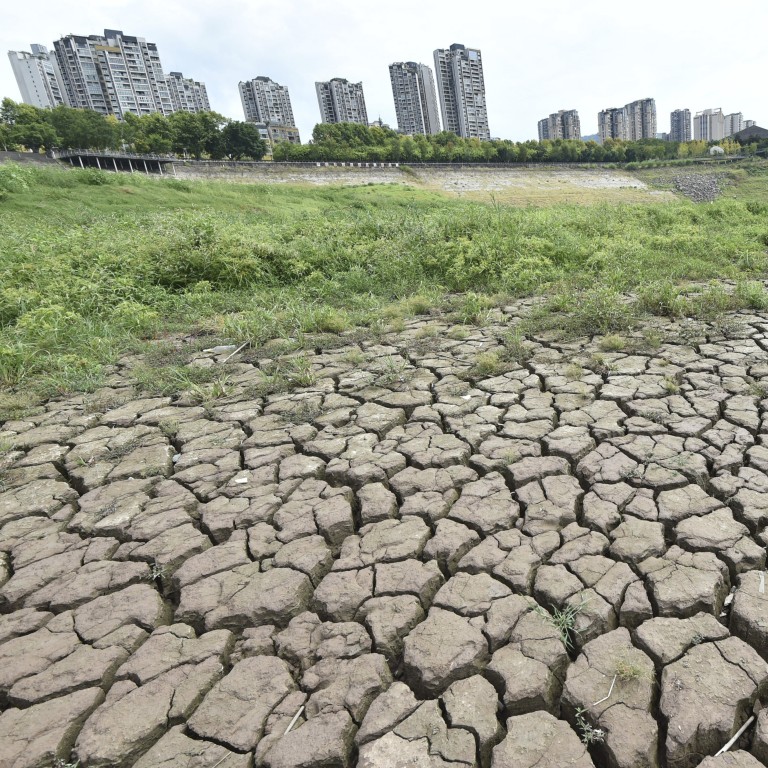
China heatwave hits supply chain for lithium batteries and solar panels as Sichuan power cut impacts key producers
- Leading producers including GCL-Poly Energy Holdings, Tongwei Solar, Tianqi Lithium and Yahua Lithium are complying with a government-ordered shutdown
- The six-day stoppage will increase prices of lithium salts and polysilicon in the short term, putting pressure on downstream players, analysts say
A heatwave baking parts of China is putting pressure on the supply chain for lithium batteries and solar panels as providers of key materials in central Sichuan province comply with a government mandate to shut down industrial production to conserve electricity for household use.
The province suspended electricity supply to all industrial activities starting on Monday and lasting through Saturday to relieve pressure on an electrical grid that is straining to handle record-breaking power usage at the same time that a drought has reduced hydropower generation.
Several of China’s major lithium and polysilicon producers with production facilities in Sichuan have confirmed they are cooperating with the government’s notice, including leading solar and lithium manufacturers GCL-Poly Energy Holdings, Tongwei Solar, Tianqi Lithium and Yahua Lithium.
“All lithium names are affected, based on our understanding,” said Dennis Ip, head of power, utilities, renewables and energy transition at Daiwa Capital Markets. It’s unclear how many companies are affected in total, but the production halt will “offer positive support to prices of both polysilicon and lithium, thus putting pressure on downstream players”, Ip said.

According to Daiwa, Sichuan produces 30 to 40 per cent of China’s supply of lithium hydroxide and 10 to 20 per cent of its lithium carbonate, as well as 8 to 10 per cent of its polysilicon – a key material in solar panels.
The suspension of production could drive lithium prices up in the short term, according to Echo Ma, an analyst at Rystad Energy. “Spot transactions of lithium carbonate were sitting at 490,000 yuan [US$72,373] per tonne on Monday, compared to 480,000 yuan per tonne last week,” she wrote in a note on Tuesday.
At least 1,200 tonnes of lithium output will be cut due to the disruptions, which is around 9 per cent of China’s weekly average production of lithium salts. However, the outages are not likely to affect deliveries of committed orders since processors all have some stock on hand, Ma wrote.

For the solar sector, Daiwa expects manufacturers to be affected for at least 10 to 15 days before they can resume production, which could drive up prices for polysilicon and polysilicon wafers in the short term.
With air-conditioning spiking power demand across a wide swathe of China, other major manufacturing hubs, such as Jiangsu, Anhui, and Zhejiang provinces, have also imposed power restrictions on multiple industries.
But the suspension in Sichuan is the most radical, as it applies to all industrial sectors. It’s also the most ironic, because cheap and abundant hydropower is a key reason many companies, especially energy-intensive solar and battery materials producers, choose to set up in Sichuan.
At the end of 2021, hydropower accounted for more than 80 per cent of Sichuan’s power output, and the province was the top exporter of hydropower to other provinces. Now the worst drought in six decades has dramatically reduced its hydropower production.
“The hydropower inflow [in Sichuan] was 40 per cent less in July,” said Li Zhao, climate and energy researcher at Greenpeace East Asia. “Since August, the number further declined to 50 per cent. The drought has led to a sharp decline in the daily power generation capacity of hydropower.”
Meanwhile, electricity demand, especially for cooling, is soaring. “From July 4 to 16, the average daily electricity consumption of Sichuan residents reached 344 million kWh [kilowatt hours], a year-on-year increase of 93.3 per cent,” she said.
‘Crazy hot’ temperatures in Sichuan result in rolling blackouts, power curbs
The breadth of the heatwave has also made it harder for the province to import power.
“Usually under drought years, other provinces can support Sichuan with their surplus power,” said Lin Boqiang, dean of the China Institute for Studies in Energy Policy at Xiamen University. “However, the heatwave this year has the whole country facing a tight situation of power supply, so the power shortage in Sichuan is even more outstanding.”
The situation should ease within a couple of weeks as the heatwave retreats, Lin said, adding that it highlights the importance of diversifying power sources and enhancing inter-regional power transmission to mitigate the impact of climate change on the power supply.
“It’s uncertain whether incidents like this year will be more frequent in the future, so there have to be some early warnings from the national planning level in order to be more responsive and better prepared,” Lin said.


